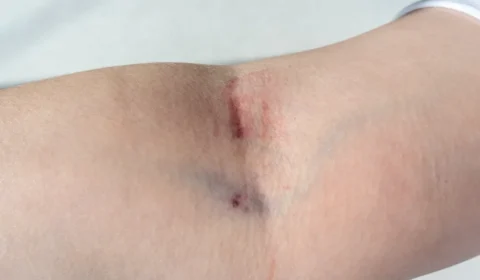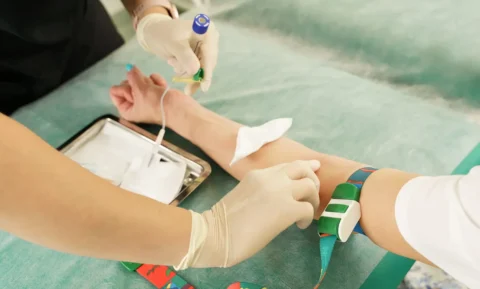Are you fascinated by the science behind healthy, beautiful skin and want to make a career out of helping people enhance their appearance and skin health? Becoming an esthetician can be an incredibly rewarding path that allows you to turn your passion for skincare into a thriving and meaningful profession.
As an esthetician, your day-to-day work may involve performing facials, waxing, microdermabrasion, laser hair removal, LED light therapy, chemical peels, eyelash extensions, and customized body treatments to improve skin tone and texture, minimize signs of aging, treat acne, eliminate unwanted hair, and more based on your clients’ needs and preferences.
If you’re exploring how to break into this growing field, you probably have questions about the required education, training credentials, and licensing needed to become an esthetician. Read on for a comprehensive overview of what degree you need, the typical esthetician program curriculum, licensing requirements, career outlook, and more key information to help you determine if this is the right career path for you.
What Type of Degree Do You Need to Become an Esthetician?
When researching how to become an esthetician, one of the first questions that comes up is: what degree do you need to be an esthetician? Here’s a look at the minimum education requirements in most states:
- High school diploma or equivalent GED certificate
- Completion of an esthetics training program at a community college, technical school, beauty school, or spa academy
- Passing scores on the written and practical licensing exams for estheticians in your state
- An esthetician associate degree or certificate is usually required for licensure. Programs typically range from 600 to 1200 hours of training depending on your state’s hourly requirements. Some states require as few as 250 hours while others mandate 1000+ hours
Many aspiring estheticians earn their esthetics diploma or certificate at community colleges, vocational schools, beauty schools, or institutes focused on spa and beauty services. These comprehensive programs combine theoretical instruction with hands-on practice to prepare you for the licensing exams and working in the field.
Some community colleges offer associate of applied science degrees in esthetics, which take 2 years to complete and include more advanced coursework in areas like business management, advanced treatments, and instructional techniques. An associate degree isn’t mandatory but provides broader, more in-depth training for those seeking greater knowledge or specialization.
What Courses and Subjects Are Part of Esthetician Training?

Wondering what classes you’ll take as part of esthetics school? While specific program curriculums can vary, here are some of the core subjects generally covered to gain proficiency in all facets of the profession:
| Topic | Details |
| Anatomy, physiology, and histology | Study of skin anatomy, the biology of skin cells, and how the body’s systems impact the skin |
| Facials and facial massage | Mastering techniques for cleansing, exfoliating masks, extractions, massage, and various facial treatments |
| Body treatments | Instruction on body wraps, scrubs, aromatherapy, and massage |
| Makeup artistry | Training in makeup application for different settings and events |
| Waxing and hair removal | Learning methods like strip and non-strip waxing of brows, lips, legs, and bikini area |
| Microdermabrasion and chemical peels | Hands-on practice with techniques that exfoliate and resurface the skin |
| Laser and light therapies | Overview of treatments like photorejuvenation and laser genesis |
| Spa business practices | Basic training in skills like appointment booking, inventory, client records, and retail management |
| Health, safety, and laws | Review of hygiene, sterilization, infection control, and relevant regulations |
In addition to classroom instruction in these areas, a core part of esthetician education is hands-on time practicing on models and clients. Most states require students to complete a minimum number of practical training hours performing services in a clinic-like setting. This allows you to refine your expertise and develop confidence before working with real clients.
What Are Some Examples of Top Esthetician Schools and Programs?
When researching esthetician programs, look for an accredited school or college program that will thoroughly prepare you for licensing and a career in skincare. Some of the top esthetics programs around the country include:
- Santa Monica College (Santa Monica, CA) – This esthetician academy has been training aspiring skin care professionals for over 50 years. The comprehensive 600-hour program includes an on-site spa clinic providing real-world experience.
- West Georgia Technical College (Waco, GA) – Offers a Basic Esthetician diploma covering 600 hours of instruction including facials, body treatments, makeup, and business practices.
- Miami Lakes Educational Center and Technical College (Miami Lakes, FL) – The 750-hour esthetics program provides training for licensure.
- Evergreen Beauty College (Everett, WA) – Evergreen’s Esthetics program requires the completion of 750 hours of training including labs, lectures, and working in the student spa.
- Empire Beauty Schools (multiple locations) – Offering esthetician training for decades, Empire Beauty Schools has dozens of locations across the country providing 600-900 hour licensed programs.
When researching schools, confirm they are approved by an accrediting body like the National Accrediting Commission of Career Arts and Sciences (NACCAS) or the Accrediting Commission of Career Schools and Colleges (ACCSC). This ensures quality standards are met. Also, check reviews and the reputation of the instructors.
What is the Process to Get Your Esthetician License?
All states require estheticians to be licensed in order to provide services to clients. The licensure process typically involves:
- Completing an accredited esthetics diploma or certificate program meeting your state’s training hours requirement
- Submitting a licensure application and required documentation
Passing the written esthetician exam administered by your state or the National Interstate Council of State Boards of Cosmetology (NIC) - Passing the practical exam where you demonstrate competency performing treatments like facials on models
Some states allow you to begin the licensing process as soon as you graduate, while others require you to complete all training hours before applying. Renewing your license periodically, often every 2 years, is mandatory for maintaining active status as a practicing esthetician. Many states also require continuing education credits to keep skills sharp.
Pass rates for the written and practical esthetician exams average around 70-80% nationwide for first-time test takers. Thoroughly reviewing your state’s exam study guide is recommended for success. Hands-on practice for the practical exam also helps build critical skills and confidence for passing.
What is the Career Outlook and Earning Potential for Estheticians?
The future looks very bright for aspiring estheticians! Skin care services are in high demand, and the United States Bureau of Labor Statistics projects employment for skincare specialists will grow 17% from 2021-2031, much faster than the average across all occupations. This increase is driven by factors like rising consumer interest in skincare and anti-aging treatments along with growing consciousness of the importance of skin health.
In addition to strong job prospects overall, estheticians have the flexibility to specialize and pursue diverse career paths. Options can include working in:
- Salons and spas – Provide facials, waxing, body treatments, and more in salon or spa settings, either as an employee or independent contractor.
- Medical offices – Estheticians enhance cosmetic dermatological treatments and procedures alongside doctors and nurses.
- Resorts and hotels – Give skin and body treatments at destination spas, wellness retreats, and luxury hotels.
- Sales and management – Some estheticians leverage experience to focus on managing spas or selling skincare products and equipment.
- Education – Experienced estheticians often have opportunities to teach future generations of skin care professionals.
According to the most recent data available, the average esthetician salary in the United States is $41,419 per year, with salaries typically ranging between $28,000 and $60,000 yearly. The average hourly rate for estheticians is $19.91 per hour. Esthetician salaries can vary significantly based on factors like geographical location, specialized skills, and type of employer.
In Washington, estheticians earn the highest average salary of $59,955 per year. Other states with relatively high average salaries for estheticians include Idaho, Maine, Maryland, and Connecticut. The top 10% of estheticians can earn up to $73,000 annually.
How to Transition into a Career as an Esthetician
Does getting certified as an esthetician seem like your ideal career move? Here are some tips for making the transition:
- Research licensing rules – Make sure to understand your state’s precise training requirements, exam process, and costs.
- Choose the right program – Find an esthetics education program with a proven track record of effectively preparing students for licensing exams and professional success.
- Get financial aid if needed – Many schools offer financial aid and student loans to help cover tuition. Government grants, scholarships, and private loans are also an option to explore if needed.
- Make professional connections – While in school, get to know instructors, clinic clients, vendors, and fellow students. This network can help with guidance and job leads down the road.
- Build a clientele – One of the best ways to start establishing your business early on is by offering discounted services like facials to friends and family as you advance in your program.
- Create a portfolio – Assemble a professional portfolio with before/after photos of your work, clinic hours, certifications, and letters of recommendation. This can impress prospective employers during the interview process.
- Gain experience – Look for part-time opportunities at salons or retail stores like Ulta or Sephora for hands-on practice with clients and exposure to selling products.
- Develop a business plan – If seeking to be an independent contractor, create a detailed plan covering services offered, pricing, location, insurance, marketing, and financial projections.
- Invest in quality tools – From treatment tables to extraction tools and makeup brushes, slowly acquire well-made esthetician tool kits tailored for the type of services you’ll offer.
- Continue learning – Take continuing education courses yearly to expand your skills in specialty areas like microblading, spray tanning, massage therapy, or permanent makeup artistry.
- Consider medical esthetics – To perform more advanced treatments like microneedling, chemical peels, and laser therapy, specialized medical esthetics training is required.
- Join associations – Membership in the Associated Skin Care Professionals or similar groups provides invaluable ongoing training, networking, and business development opportunities.
Ready to turn your passion for skincare into a fulfilling and prosperous esthetician career? With the right program, dedication, and business acumen, you can be autonomously supporting skin health and beauty in no time!
Conclusion

We hope this comprehensive guide provided clarity on what degree and training you need to become a licensed esthetician along with insights into potential career paths, earnings potential, and tips for getting started. With hard work and commitment to honing your craft, the professional possibilities within esthetics are almost endless.
To further your education and training in medical aesthetics, explore the wide selection of online courses we offer. Check it out today to find the perfect course to advance your skills and knowledge.






